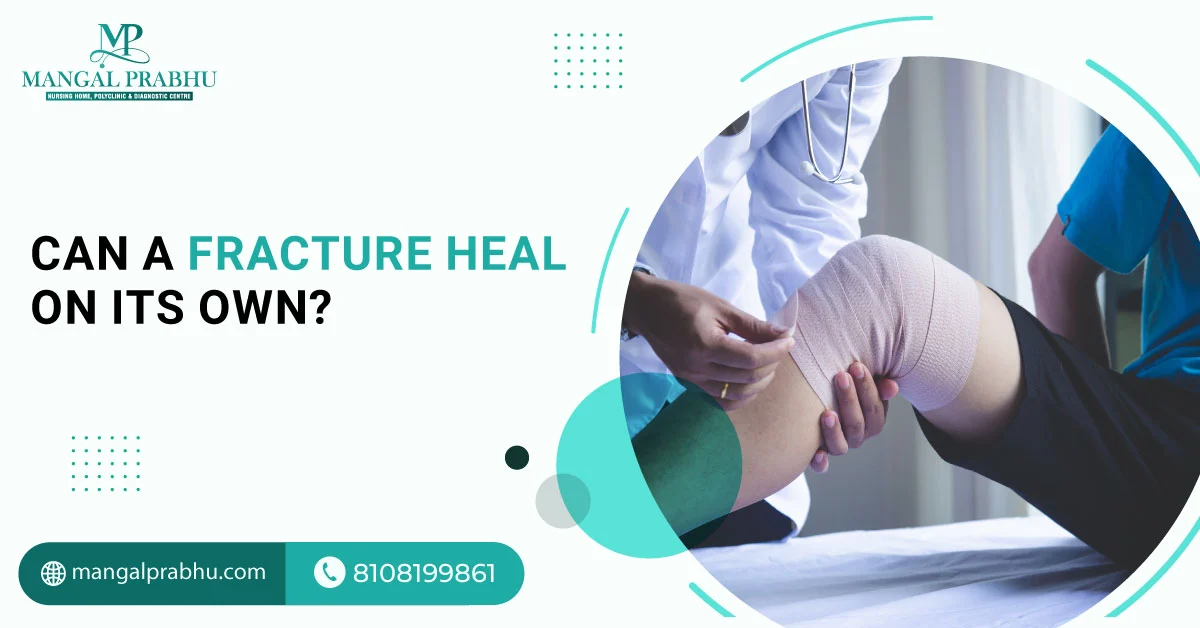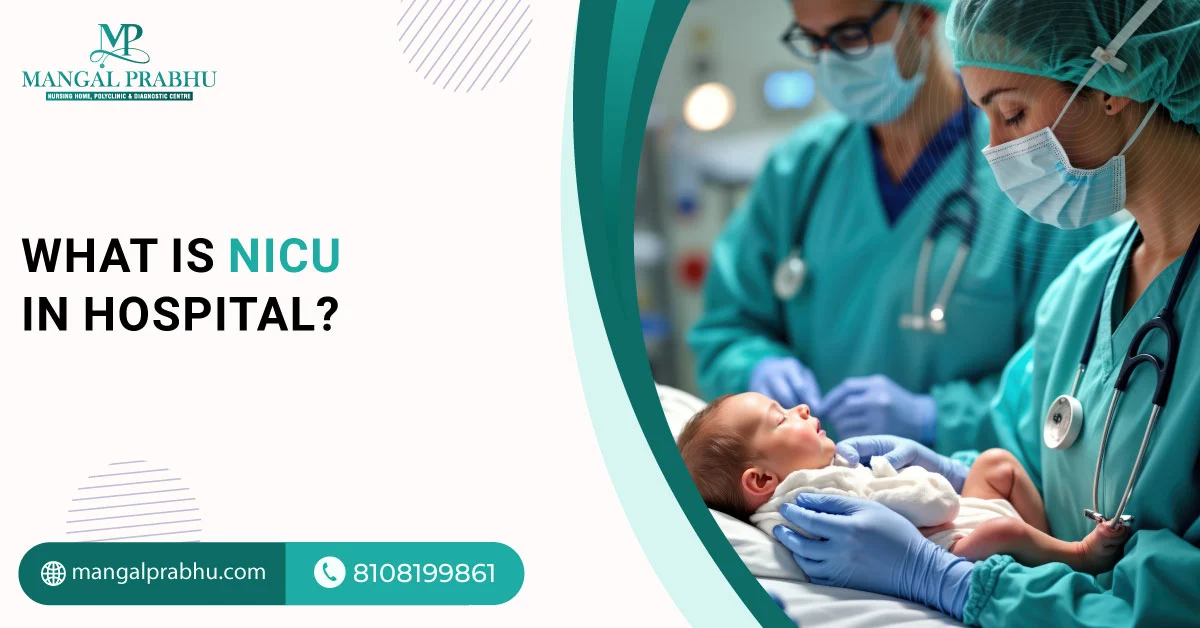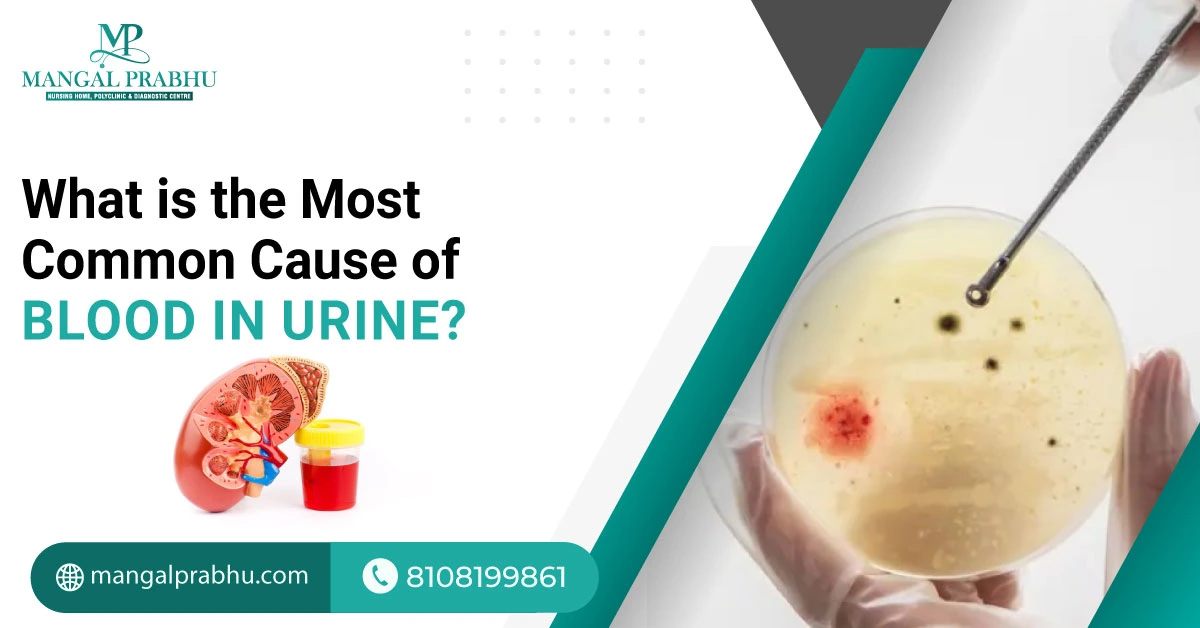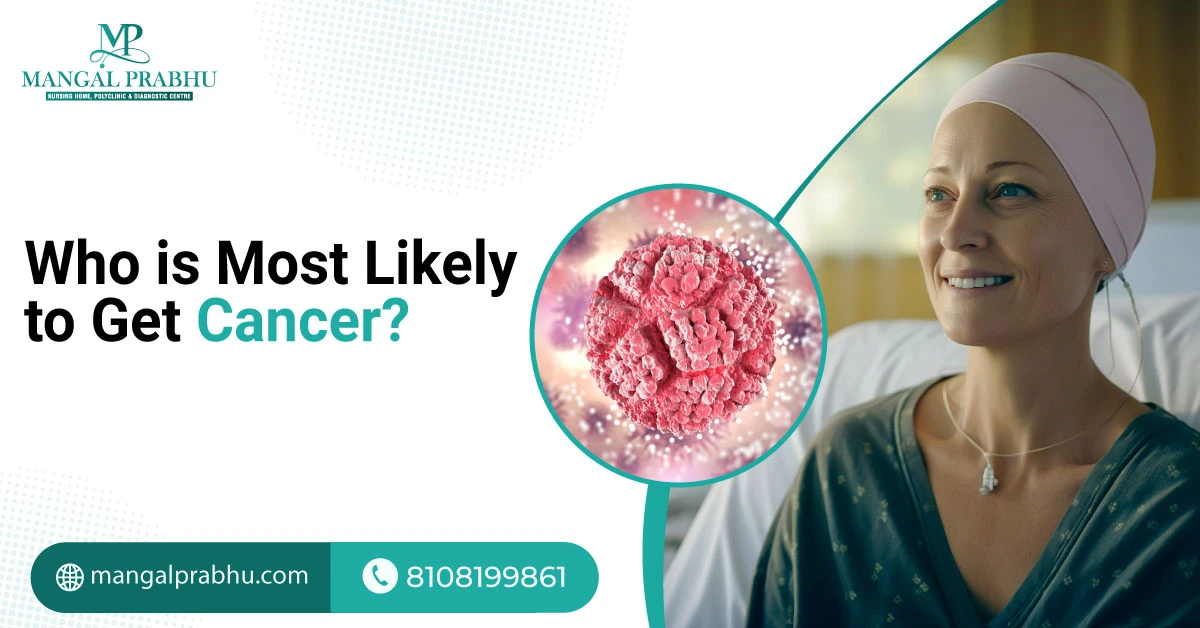
Can a Fracture Heal On Its Own?
Can a Fracture Heal On Its Own?
Our bones have limited flexibility. They can handle pressure only to a certain extent. When exposed to a significant force, they might fracture. While it’s obvious that a severe fracture requires an immediate visit to the orthopedic hospital in Navi Mumbai, people often wonder if mild fractures can heal on their own.
Fractures can often be healed with home remedies. However, this applies only to certain types of fractures. Let’s discuss it in detail:
a) Types of Fractures
A bone fracture is when your bone breaks partially or completely. It may vary in severity, depending on how forcefully your bone got hit. Here is the classification of bone fractures:
i) Simple Vs. Compound Fractures:
In a simple fracture, your bone cracks but does not break through the skin. The fracture isn’t severe enough to cause a deep wound. A compound fracture punctures your skin.
ii) Stable Vs. Unstable Fractures:
In a stable fracture, the broken parts of the bone do not get misaligned, while an unstable fracture causes the misalignment and the risk of further damage to the nearby ligaments.
It’s obvious that compound and unstable fractures require medical attention, while the simple fractures that do not cause any dislocation or skin wound can heal on their own.
b) Natural Healing Process
The timeline for recovery from a bone fracture may vary from person to person. A simple wrist or hand fracture might heal in 6 weeks, but the broken tibia can take up to 20 weeks to heal completely. Here’s the breakdown of the recovery phases:
c) Inflammation
Your body’s inflammatory response activates as soon as you have sustained a bone fracture. Due to the damage to the tissues and blood vessels, bleeding starts and the blood pools around the broken ends of the bone. This blood thickens and turns into a clot.
The dead cells die and are cleaned up from the site. During this phase, you will notice swelling and sharp pain. These are the signs that you are in the inflammatory phase of healing. It lasts 1-2 weeks.
d) Repair Phase
Once the dead cells are removed, your body will work hard to rebuild the new structure. It builds new cells, cartilage, and fibrous tissues. They all form a fracture callus, a soft patch where calcium deposits. It becomes harder to form a new, stabilized bone.
e) Remodeling
At this point, the fracture callus hardens, and the new bone starts forming. The progress is visible on an X-ray. You won’t feel the pain, swelling, and inflammation like before. However, the remodelling might go on for several months.
When Medical Intervention is Necessary
Unfortunately, not all fractures have a simple healing process. Here’s when you need to see a doctor for bone fracture treatment in Navi Mumbai:
- The bone has shattered into multiple pieces and has wounded your skin
- You have diabetes or other medical issues.
- The X-ray shows bone dislocation
Ideally, it’s best to consult a doctor to know whether the fracture is severe enough to require medical attention. Based on your symptoms and reports, you may need a cast, brace, or surgical treatment.

Can a PCOS Patient Get Pregnant?
While women with PCOS might face difficulty getting pregnant, it’s a treatable condition. With medication and lifestyle changes, you can conceive. Women are advised to get PCOS treatment in Navi Mumbai to improve their chances of pregnancy. Let’s take a detailed look at “Can a PCOS patient get pregnant”? And how PCOS is managed in women planning pregnancy.
Can PCOS Patients Get Pregnant?
Polycystic Ovarian Syndrome (PCOS) is a hormonal condition that disrupts a woman’s ovulation cycle. Normally, your ovaries release an egg every month during your ovulation cycle. In PCOS patients, the follicles do not release a mature egg, resulting in irregular periods. This also happens because of a hormonal imbalance.
PCOS results in increased production of androgens (male hormones) and reduced production of estrogen. This affects your fertility. If your follicles do not produce mature eggs, there’s no chance of fertilization. That said, even with PCOS, some women tend to ovulate. It may not be regularly, but occasionally. All you need to do is use an ovulation tracking kit to find the best time to try.
Treatment Options to Enhance Fertility
Here’s what your doctor may advise you if you are trying to conceive with PCOS:
i) Lifestyle Changes
If your BMI is above 30, focus on losing weight. Eat a nourishing diet and stay active. Losing just 5-10 percent of weight will be enough to restore your normal ovulation cycle. Additionally, mental stress can worsen symptoms. Practice meditation and yoga, and indulge in your hobbies to de-stress your mind.
ii) Medical Treatments
Your gynecologist in Navi Mumbai might recommend medication to stimulate your ovaries to produce and release a mature egg every month. You will be prescribed clomid or metformin (if you have insulin resistance with PCOS). The goal is to correct your disrupted ovulation cycle, which may eventually help you conceive.
iii) Assisted Reproductive Technology
If none of the above treatment options work, your last resort is Assisted Reproductive Technology (ART). It’s a collective name for treatments that involve sperm and egg fertilization outside your body. The most common ones are In Vitro Fertilization (IVF) and Intrauterine Insemination (IUI).
A fertility specialist will prescribe medication to stimulate your ovaries to release eggs. These are collected through a minimally invasive surgical procedure. The retrieved eggs are combined with your partner’s sperm in an embryology lab. The fertilized eggs take 3-5 days to turn into an embryo. The last step is embryo transfer into your uterus. You can take a pregnancy test 10-12 days after implantation.
Tips for Managing PCOS While Trying to Conceive
Here’s what you can do to maximize your chances of natural conception despite PCOS.
- Eat low-glycemic index foods, such as green leafy vegetables and whole grains.
- Maintain a habit of exercising at least 20 minutes a day.
- Indulge in calming activities, like meditation and journaling.
- Use ovulation predictor kits to time your intercourse.
Consult your gynecologist to learn more about conception with this hormonal condition and get practical tips for managing PCOS symptoms.

How Cashless Hospitalization Works in India?
Cashless hospitalization in India lets policyholders get treatment without upfront payment; the insurer settles bills directly with the hospital.

What is NICU in Hospital?
It might be overwhelming for parents to see their little bundle of joy in the Neonatal Intensive Care Unit (NICU). The machines, incubators, and the professionals checking on your babies might seem serious. A NICU hospital in Navi Mumbai is equipped to handle complex cases, such as offering 24/7 monitoring and extensive care to preterm babies. Let’s learn more about NICU and what you can expect.
Who Needs NICU Care?
When a baby leaves the mother’s womb, many physical changes occur. From breathing to nourishment, they rely on their mothers before birth. Now, they have to adjust to life outside the womb. While that may go easy for some babies, others with low birth weight or birth complications are referred to the NICU. It’s mainly for:
1) Premature Infants:
If your baby is delivered before 37 weeks, it will be considered a premature baby. They may need NICU as their lungs and other organs might not be fully developed yet.
2) Newborns with Health Complications:
Mothers who went through a prolonged labor might have to admit their babies to NICU right after birth. That’s specifically required for babies who were deprived of oxygen during labor. Babies diagnosed with severe jaundice might also need NICU for phototherapy.
3) Low Birth Weight:
For babies with a low birth weight (below 2.5 kilograms), a neonatologist in Navi Mumbai may recommend the NICU. This helps the baby breathe, gain weight, and fight infections.
Key Features of a NICU
Here’s what parents can expect from the NICU:
a) Advanced Medical Equipment
NICU is designed for underweight babies and those born with complications. As parents, you can expect your little ones to receive the best possible care. The units are equipped with cutting-edge technology, including incubators that keep babies warm, monitors that track their vitals, ventilators that help with breathing, and feeding tubes.
b) Highly Trained Medical Staff
At the NICU, your little one will receive the best care from neonatologists, respiratory therapists, NICU nurses, and lactation consultants. They will be monitored around the clock by professionals trained to handle complex health issues in babies.
c) Counselors
Some NICUs have counselors and social workers who assist overwhelmed parents. They offer emotional support to parents struggling with stress and concerns about their baby’s health.
Common Conditions Treated in NICU
Here are a few common conditions treated in the NICU:
i) Respiratory Distress Syndrome
Due to their undeveloped lungs, premature babies might experience difficulty breathing. NICUs are equipped with machines that stabilize their vitals.
ii) Neonatal Jaundice
Jaundice is a normal condition in neonates and usually resolves on its own within a few weeks. However, if the baby develops jaundice in the first 24 hours of birth or has too high bilirubin levels, they may need phototherapy and, rarely, blood transfusion.
iii) Congenital Anomalies
Babies born with birth defects, like heart issues, an undeveloped digestive system, spina bifida, musculoskeletal problems, and issues with the central nervous system must be admitted to NICU for specialized care.
Although the neonatal intensive care unit may sound intimidating, rest assured that many babies are discharged as soon as they are strong enough to adapt to the world.

How to Get Normal Delivery Without Pain?
Giving birth is a golden moment in a mother’s life. There’s no feeling greater or better than the joy of holding your precious little bundle of joy in your arms for the first time. As exciting as it sounds, it comes with the worry of labor and childbirth. If you ask any professional obstetrician in Navi Mumbai, they will say there’s no way you can have a completely painless natural delivery.
However, the severity of the pain can be reduced drastically. In this post, we’ll take a look at some ways you can have a normal delivery without experiencing severe pain.
Preparing for a Pain-Free Delivery
Preparing your body and mind for childbirth is the first step to making a painless, normal delivery possible. These quick tips will help prepare you for a smooth labor and childbirth experience.
i) Stay Active:
Physical activities like walking, stretching, yoga, and pelvic-floor strengthening exercises can make labor less painful and build confidence and endurance.
ii) Attend Prenatal Classes:
Every woman has a unique childbirth experience. Instead of listening to others’ stories, you should work with a professional gynecologist. During prenatal classes, you will learn breathing techniques, different methods to ease and manage pain during labor, and more.
iii) Food and Hydration:
Hydration and the right food choices during pregnancy and labor are key to a smooth childbirth experience. Fatigue can make labor pain worse, so it’s advisable to eat well and drink enough water in early labor.
Pain Management Techniques
These tips will help you manage labor pain effectively:
a) Breathing Exercises
Breathing techniques, like Lamaze, can help you have a normal delivery. The technique focuses on controlled breathing, which helps in pain management and improves oxygen supply to the baby.
b) Water Birth
Women can choose to deliver in a birthing pool. Experts believe that floating or simply sitting in warm water can relax muscles and reduce pain perception. It can be very effective in the first stage of labor.
Besides, water mimics the environment that the baby has grown in, so it involves a safer transition from the womb to the outside world for the baby, too.
c) Hypnobirthing
Listening to positive affirmations, practicing breathing techniques, and meditating are a few ways to trick your subconscious mind into remaining relaxed during labor. Our subconscious controls our different sensations, including pain endurance. Hypnobirthing or triggering your self-conscious state to take birthing positively and with a de-stressed mind can do wonders during labor.
d) Get Epidural
If the pain feels unbearable or you seem to be losing too much energy in the first stage of labor, getting an epidural might be a wise move. Choose a hospital for painless delivery in Navi Mumbai that provides epidural and has professionals who can administer it effectively. Epidural blocks the pain signal. It’s usually administered when you are about to enter the active stage of labor, when contractions become more intense and frequent. With an epidural, you won’t feel the contractions and will have adequate energy to push when you are fully dilated.

What are the 10 Causes of Malaria?
Malaria is caused by a parasite that enters your body through a mosquito bite. The mosquitoes that spread Malaria survive in countries with hot temperatures. The symptoms include high-grade fever, shaking chills, fatigue, and weakness. Every year, thousands of people get admitted to the hospital for malaria treatment in Navi Mumbai. Let’s check out some common causes of Malaria so you can take preventive actions to reduce your risk.
What are the 10 Causes of Malaria?
1. Plasmodium Parasites
As mentioned above, malaria is caused by a parasite called Plasmodium. It’s divided into five types, with each having the potential to result in an infection. It enters your body when an infected mosquito bites you and injects the parasite into your bloodstream.
2. Anopheles Mosquitoes
Not every mosquito bite results in malaria. It’s caused by female Anopheles mosquitoes that are the primary vector of the plasmodium parasites. Likewise, malaria doesn’t spread from person to person. Sneezing, coughing, or touching the infected person won’t increase your risk of developing malaria.
3. Climate and Environmental Factors
Malaria is more prevalent in countries with temperatures hot enough for the Anopheles mosquitos to thrive. Mosquitoes love warm and humid climates, which is why malaria is often reported in South Africa, South America, and Asia.
4. Poor Sanitation and Water Management
Malaria risk is higher in areas with stagnant water, such as ponds or containers filled with water. Dirty places are also a common breeding ground for these mosquitoes.
5. Weak Immune System
People with weak immunity, such as young babies, elders, and those with existing medical issues, are at an increased risk of malaria, as their immunity might not fight off the infection as effectively as that of a healthy adult.
6. Deforestation
Without trees, forests and other areas collect rainwater, which acts as the perfect breeding ground for malaria-causing mosquitoes.
7. Poverty
People who cannot use preventive measures, keep their surroundings clean, or have basic healthcare facilities might develop and spread malaria.
8. Lack of Access to Healthcare
If people with no access to healthcare facilities develop malaria, they might spread it to other people unknowingly. This happens when the parasite remains in the infected person’s bloodstream. If another mosquito bites them, it catches the parasite and injects it into someone else’s body through a bite. The cycle keeps going.
9. Resistance to Antimalarial Drugs
Incorrect or overuse of anti-malarial drugs can cause resistance. The parasite Plasmodium might develop resistance to these drugs and, hence, not respond to it.
10. Population Movement and Migration
If you travel to a country that’s highly prone to mosquito-related infections, you might be more vulnerable to catching the disease. This is especially true for people who don’t take preventive measures like using mosquito nets and repellants. People migrating to your country from South Africa, Asia, and other countries might also increase your risk of getting malaria.
If you suspect an infection, it’s important to see an infectious disease specialist in Navi Mumbai for treatment of malaria. Fever, headache, nausea and vomiting, muscle or joint pain, and chills are the common signs that indicate you need to see a doctor.

Difference Between Neonate vs Infant
We call babies with different cute terms. But did you know there’s a medical term used for babies of different ages? Neonates, infants, and toddlers are a few of the most common terms people use to describe babies of certain ages. In this post, we’ll take a look at the terms that a paediatrician in Navi Mumbai commonly uses to address a baby. Although the terms “neonate and infants” are often used interchangeably, here’s what makes neonates different from infants and toddlers.
Characteristics of a Neonate
1) Age Range
Generally, people consider children between 2 and 3 months old babies, but medically, they are referred to as neonates. A baby who is 28 days old or younger is called a neonate. During this stage, the baby is adapting to life outside the womb.
2) Physical and Developmental Milestones
Babies tend to develop rapidly in the first few months, usually up to a year. In the first month of their birth, they develop a sucking reflex and startle reflex. They sleep for the longest period, mostly 16-20 hours a day. However, it’s important that you wake them every few hours (as recommended by your pediatrician) for feeding. Crying is their only way to tell their needs.
3) Common Health Considerations
Neonates require extra care from their caregivers and medical staff as they are still adjusting to a new life. They might experience breathing difficulties, a higher risk of jaundice, infections, and feeding difficulties (especially in premature babies).
Characteristics of an Infant
1) Age Range
An infant is one month to one year old and experiences many rapid developments during this time. All neonates are infants, but infants are not considered neonates.
2) Physical and Developmental Milestones
An infant develops at different paces, but most babies tend to recognize their parents, smile, and make sounds by the time they are 3-4 months old. They learn to hold their heads up, follow things, and understand colors and patterns. They start sitting with support by 6 months and grasp objects. They may learn to crawl and stand with support by 9 months until they finally take their first baby steps at one year.
3) Common Health Considerations
Although infants have comparatively stronger immunity than neonates, they are still developing. They might experience teething issues, such as irritability and discomfort. Infection is also common among infants, as they tend to explore their environment and pick random objects. Food allergies can also occur. It’s important to see a specialist at a children’s hospital in Navi Mumbai before starting solids.
Differences Between Neonates and Infants
Here are some common differences between a neonate and an infant:
| Basis | Neonate | Infant |
| Nutritional Needs | Breast milk or formula milk | An infant above 6 months old needs a liquid and semi-solid diet along with formula/breast milk. |
| Sleep pattern | Requires 16-20 hours of sleep | Requires 12-14 hours of sleep |
| Development | Moro and sucking reflex | Sits, crawls, stands, and learns to speak |
Understanding the different phases of childhood will prepare parents to take the best care of their little ones.

What is the Most Common Cause of Blood in Urine?
Blood in the urine or hematuria is a medical condition that indicates the presence of blood cells in your urine. You can have visible hematuria, i.e., your urine might turn red, pink, or other dark colors. Or, it could be microscopic (the blood cells might not be visible to you) but can be identified by a urine test recommended by a urologist in Navi Mumbai. In this post, we’ll discuss the different causes of hematuria.
Common Causes of Blood in Urine
Usually, when your kidneys make urine, they do not include blood cells. In people with a urinary tract issue, the blood cells might leak into the urine. Here’s why it occurs:
a) Urinary Tract Infections (UTIs)
Bacteria can enter the urethra and bladder, where they multiply, leading to an infection. UTIs can cause hematuria, a burning sensation while urinating, a frequent urge to urinate, and a strong, unusual odor in urine.
b) Kidney Stones
An imbalance in the minerals in your urine can form hard crystals, which eventually turn into stones. These can be different sizes and might be in your bladder or kidneys. They might not cause symptoms unless they get stuck in the ureters or other parts of your urinary tract and block urine flow. They can also cause blood in the urine.
c) Bladder or Kidney Infections
UTIs occur in the lower urinary tract but can sometimes affect the upper part, i.e., your kidneys. If the bacteria reaches your kidneys, they might cause inflammation in the urinary tract and weaken the blood vessels. Hematuria can occur when the blood vessels break, leaking blood into your urine.
Less Common Causes
Here are a few other potential causes of hematuria.
i) Enlarged Prostate
This is a common urinary issue in men over 50. As the prostate gland grows, it puts pressure on the surrounding organs, including the bladder. This can lead to symptoms like blocked urine flow, a constant urge to pee, and hematuria. Blood might also occur due to the fragile blood vessels that tend to break under the pressure of the prostate.
ii) Genetic Diseases
Sickle Cell Anemia and other inherited blood disorders can lead to visible blood in the urine or blood drops that are too small to be seen by the naked eye.
When to Seek Medical Attention
Visit a healthcare provider to discuss the most viable blood in urine (hematuria) treatment in Navi Mumbai. While it may be harmless and not a major issue in some cases, hematuria can also indicate a serious underlying problem that requires immediate medical attention. See a urologist if you experience these symptoms:
- A considerable amount of blood in your urine
- Fever and nausea
- Pain in the back
- Blocked urine flow or frequent urge to urinate
Conclusion
Hematuria isn’t a disease in itself but a symptom that may point to an underlying health issue. It can occur as a sole symptom or accompanied by other potential issues, such as back pain, difficulty urinating, or incontinence. A urologist can diagnose the cause of hematuria and plan the most suitable treatment for your case.

What is the Best Injection for Knee Pain?
Knee pain affects millions of people worldwide. Among the many causes, the most common is arthritis. Chronic knee pain can make your daily activities difficult. Whether it’s walking, climbing stairs, or getting up from a chair, most of your daily tasks will become challenging and painful. It’s important to schedule a visit to the orthopedic hospital in Navi Mumbai to identify the cause of the knee pain and determine the most viable treatment plan. In the meantime, here’s a look at the common causes of knee pain and a few effective injections that may help manage your symptoms.
Common Causes of Knee Pain
Knowing the causes of knee pain will help you decide the best treatment. Here are a few:
a) Arthritis
Osteoarthritis and Rheumatoid Arthritis (RA) are common knee issues that can affect people of any age. Osteoarthritis refers to the wear and tear of the cartilage, which results in excessive pain and stiffness around the affected joint. RA is an autoimmune condition that results in joint inflammation.
b) Injuries
Knee pain is also common in people who work or participate in activities that carry a high risk of joint injuries, such as sports. ACL tears, sprains, strains, and meniscus tears are a few common examples.
c) Overuse
Knee overuse caused by activities that put immense pressure on the knee joint can also lead to excruciating pain, inflammation, and joint stiffness.
What is the Best Injection for Knee Pain?
Injectables can be used for quick and long-term relief from joint inflammation and pain. Your doctor will inject the healing substances directly into your affected joint to help manage your symptoms. Here’s what may work:
i) Corticosteroid Injections
If your knee pain is due to arthritis, an injury, or other conditions that led to excessive joint inflammation, you might be a good candidate for corticosteroid injections. They contain strong anti-inflammatory and numbing substances that bring the inflammation down and offer relief from pain.
ii) Hyaluronic Acid Injections
With your cartilage wearing down, your bones might rub against each other as you move. This also results in the loss of hyaluronic acid, which acts as the lubricant supporting the natural joint movements. Hyaluronic injection, also called viscosupplementation, mimics the natural hyaluronic acid and provides stability and flexibility to your knee. The effect can last for weeks to months, depending on the severity of your knee pain.
iii) Platelet-rich Plasma (PRP) Injections
This modern therapy focuses on injecting your own blood into your knee joint to speed up healing. The procedure involves drawing the patient’s blood, increasing the concentration of platelets, and injecting it back into their knees.
iv) Stem Cell Therapy
Another effective procedure that the doctor for knee pain treatment in Navi Mumbai recommends is stem cell therapy. It aims to slow the deterioration of your knee joint by using your body’s healing mechanism. It involves injecting stem cells, which are drawn from your bone marrow, into the affected knee joint.
Conclusion
Each injection has its advantages and limitations. It’s best to talk to your doctor about your symptoms and medical history. They will run tests on your knee joints to analyze the level of damage before recommending injectables.

Who is Most Likely to Get Cancer?
Cancer is a severe chronic disease that can affect anyone. The World Health Organization states that 30-50 percent of cancers can be prevented. A cancer specialist in Navi Mumbai believes that your lifestyle choices play a significant role in increasing your risk of having cancer. Quitting smoking and having a healthy physical routine (to name a few) can mitigate this risk. In this post, we’ll take a look at who’s most likely to get cancer and why.
Who is Most Likely to Get Cancer?
i) Genetic Factors
While cancer doesn’t directly pass from parents to their offspring, the gene mutations can be inherited. Certain gene variants might increase your likelihood of developing certain types of cancers.
For example, BRCA1 and BRCA2 gene mutations are linked to an increased risk of breast and ovarian cancers. Mutations in the RB1 gene can cause eye cancer in children. That said, having cancer-related gene variants doesn’t mean you will definitely develop cancer. It only increases the risk. It’s advisable to schedule regular checkups with your healthcare expert just to be on the safe side.
ii) Lifestyle Choices
As mentioned above, certain lifestyle choices are associated with an increased risk of cancer. Here are a few:
a) Smoking and Tobacco Consumption:
These are the biggest risk factors for cancer. Smoking interferes with the cell’s DNA, making them more likely to grow aggressively, forming a tumor. These are linked to throat, mouth, bladder, pancreatic, and lung cancer. Not only smoking but exposure to second-hand smoke may also increase your risk.
b) Diet and Exercise Habits:
Your diet also affects your cancer risk. People eating a high amount of red meat, processed foods, saturated fats, and sugary foods are more likely to develop cancer than those eating healthy and nutritious foods, such as leafy greens, whole grains, and fruits. Living a sedentary lifestyle can also negatively affect your risk of having cancer. It’s advisable to be physically active. This will keep your weight and hormones in check.
c) Alcohol Consumption:
Another preventable risk factor of cancer is alcohol consumption. Alcohol is linked to a heightened risk of throat, mouth, esophageal, colorectal, and liver cancer.
iii) Environmental Exposures
Certain environmental factors, such as sunlight and radiation, can expose you to carcinogens, thus increasing your risk of developing melanoma and other types of cancers. Exposure to toxins in the workplace can also contribute to your risk.
iv) Age and Gender
Most patients get cancer after 50, as DNA damage occurs over time. Cancer risk also depends on gender. Women are more likely to develop breast, ovarian, and cervical cancer, while men are at an increased risk of colorectal, prostate, and lung cancer. That said, young people can also develop it. It’s best to visit the cancer hospital in Navi Mumbai for regular screenings.
v) Medical History
People who have had cancer before are more likely to develop it in the future. Certain types of infections, such as HPV, can heighten your risk. Weakened immunity is also associated with an increased risk of cancer, as it makes you more prone to infections. That’s all about the factors affecting your risk of getting cancer. Although you can’t completely eliminate the risk, certain factors that heighten your risk can be controlled.
